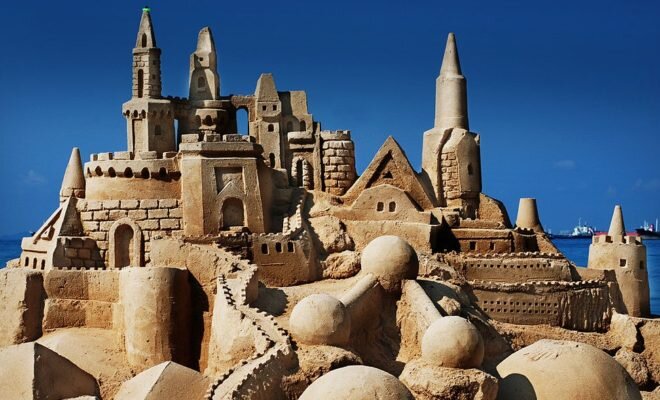Powhatan House
The 1847 Powhatan House became the property of the Galveston Garden Club, its current owners, in 1965. Over time, the garden club restored the house to its 1893 appearance, including Victorian furnishings and a garden planted in oleanders.
The house, located at 3427 Ave O, is one of the oldest homes on the island and was among the first of a series of successful restorations in Galveston. These restorations became the focus of an active tourist industry, replacing the city’s waning trading activity. The Galveston Garden Club uses the house and grounds for its monthly meetings, for periodic fundraising sales and events and educational programs. It opens the house for use by civic organizations and private events rentals.
History of the House
The Powhatan House was built as the home of Col. John S. Sydnor, a prominent cotton merchant, early mayor of Galveston and financier. The Powhatan House is an unusually sophisticated example of Greek Revival architecture in Texas. The construction of the Powhatan House and its change in use over many years of occupancy mirrors the history of Galveston’s development and eventual decline as Texas’ leading mercantile and cultural center.
Sydnor named the 24-room house after the Indian tribes in his native Virginia. The original Powhatan House had a six-column portico, a characteristically Galvestonian raised basement or ground floor and five acres of gardens planted with oleanders which were to become a feature of the island's gardens.
The house itself was largely the result of Sydnor’s trading ventures. It was built of lumber, windows, sectional columns, hardware and well-crafted cyma recta mouldings shipped from Maine in the otherwise empty holds of cotton vessels returning from the northern ports. The fabrication of houses for Texans, in the seaports of Maine, was one of the dominant elements of trade balance between Galveston and the North. Two other houses still standing in Galveston, the Menard House and the Williams-Tucker House (see National Register submission “Samuel May Williams House” July 14, 1971) were also built of parts fabricated in Maine.
In 1866, Sydney sold the house to a Mr. Bolton, who attempted to operate schools and a military academy in the house’s spacious rooms. All of his efforts proved unsuccessful, however, and he converted the Powhatan to use as his private home.
In 1881 the house was purchased by the City of Galveston to use as the island’s first orphanage. In 1893, a new orphanage was built ,and the Powhatan House became the property of Carolyn Willis Ladd, who had the house moved from its original location between 21st and 22nd Streets and M and N Avenues, to its present location.
Under the supervision of the architect W.H. Tyndall, the house was divided into three sections and remodeled into three separate houses on contiguous lots. Each house was elevated on a 10-foot-high brick basement containing a kitchen and servants’ quarters.. The central portion continued to be known as the Powhatan House or the “Main House.” Tyndall extensively modified the interiors, replacing original mantels with Victorian pressed-brick facings, new staircases and a variety of diamond pane and two over two light windows.
In 1903 Charles Vedder, a prominent Galveston cotton merchant, purchased the main house, which had been only slightly damaged by the disastrous flood and hurricane of 1900. The Vedder family occupied the house at the time of the 1907 grade-raising. The Vedders lost their basement kitchen and breakfast room to the inundation of sand pumped from Galveston Bay. The Vedders added a wing to the east of the house to replace the buried rooms.
Vedder was appointed by Theodore Roosevelt as United States Cotton Commissioner and was a member of the Galveston Cotton Exchange, which, together with the Wharf Commission, virtually controlled all of Galveston’s trading activity. Vedder’s wife, Florence, was the granddaughter of General George Heath Flood, who had been U.S. Minister to the Republic of Texas in 1839.
In 1927, the British government leased the house for use as its consulate. In 1935 the Vedders sold the house to J.W. Oschman, who occupied it until 1960 when the Forrest Dyer family purchased it.
Five years later, the Powhatan House became the property of the Galveston Garden Club.
-
2022
- Mar 17, 2022 Ivy Dishes
- Jan 29, 2022 Grace Episcopal Church
- Jan 1, 2022 100 Years
-
2021
- Aug 25, 2021 My Fig Tree
- Apr 28, 2021 Darlene's Shrimp
- Apr 24, 2021 Oleander Festival
- Feb 27, 2021 Great Winter Storm
- Feb 10, 2021 The Mourning Wave
-
2020
- Oct 26, 2020 Crepe Myrtles
- Sep 18, 2020 Trimming the Palms
- Jul 19, 2020 The Dancers
- Jul 11, 2020 Postcards
- Jun 20, 2020 Resilience Flag
- Jun 19, 2020 Juneteenth
- Jun 10, 2020 Silk Stocking
- May 27, 2020 Tree Sculptures
- May 6, 2020 Babe's Beach
- Apr 22, 2020 Opera House
- Mar 2, 2020 Texas Heroes Monument
- Feb 15, 2020 Mardi Gras Parade
- Jan 19, 2020 St. Joseph's Church
-
2019
- Dec 15, 2019 Celebrations
- Nov 6, 2019 Fresh Paint
- Oct 21, 2019 Jazz Age Series
- Oct 20, 2019 ARToberFEST
- Oct 6, 2019 Stingeree
- Oct 5, 2019 Pumpkin Time
- Oct 2, 2019 Sea Turtles
- Sep 29, 2019 Powhatan House
- Sep 24, 2019 The Dolphins
- Sep 5, 2019 Lucas Apartments
- Aug 24, 2019 Sandcastles
- Aug 9, 2019 The Daily News
- Jul 18, 2019 Beach Walk
- Jul 10, 2019 La King's
- May 25, 2019 Pleasure Pier
- May 1, 2019 Bolivar Ferry
- Mar 15, 2019 Saengerfest Park
- Jan 19, 2019 Moody Mansion
-
2018
- Dec 18, 2018 The Vintage Suitcase
- Dec 17, 2018 Festival of Lights
- Dec 2, 2018 Sunday Brunch
- Nov 21, 2018 Hendley Row
- Oct 27, 2018 Island Oktoberfest
- Sep 20, 2018 The Strand Clock
- Sep 16, 2018 St. Mary Cathedral
- Aug 11, 2018 No More Shed
- Jun 10, 2018 Rosenberg Library
- May 7, 2018 Stepping It Up
- May 3, 2018 A Happy Hour
- May 1, 2018 Ashton Villa
- Apr 21, 2018 96th Birthday
- Apr 1, 2018 Seawolf Park
- Mar 27, 2018 Ball High School
- Mar 15, 2018 East End
- Feb 1, 2018 Tremont House
- Jan 26, 2018 Menardi Gras
- Jan 24, 2018 Mardi Gras Decor
-
2017
- Dec 1, 2017 Miss Ruby
- Oct 8, 2017 Railroad Museum
- Oct 7, 2017 Tall Ship Elissa
- Sep 9, 2017 Star Drug Store
- Sep 8, 2017 1900 Storm Statue
- Aug 6, 2017 The Turquoise Table
- Aug 1, 2017 Bishop's Palace
- Jul 23, 2017 Garten-Verein
- Jul 21, 2017 Yard Work
- Jul 16, 2017 The Strand
- Jun 17, 2017 Stewart Beach
- Jun 7, 2017 The Original
- Jun 3, 2017 Murdochs
- May 27, 2017 Bryan Museum
- May 19, 2017 Firemen on Call
- May 13, 2017 Williams-Borden Neighborhood
- May 1, 2017 Oleander City
- Apr 28, 2017 God Winks








